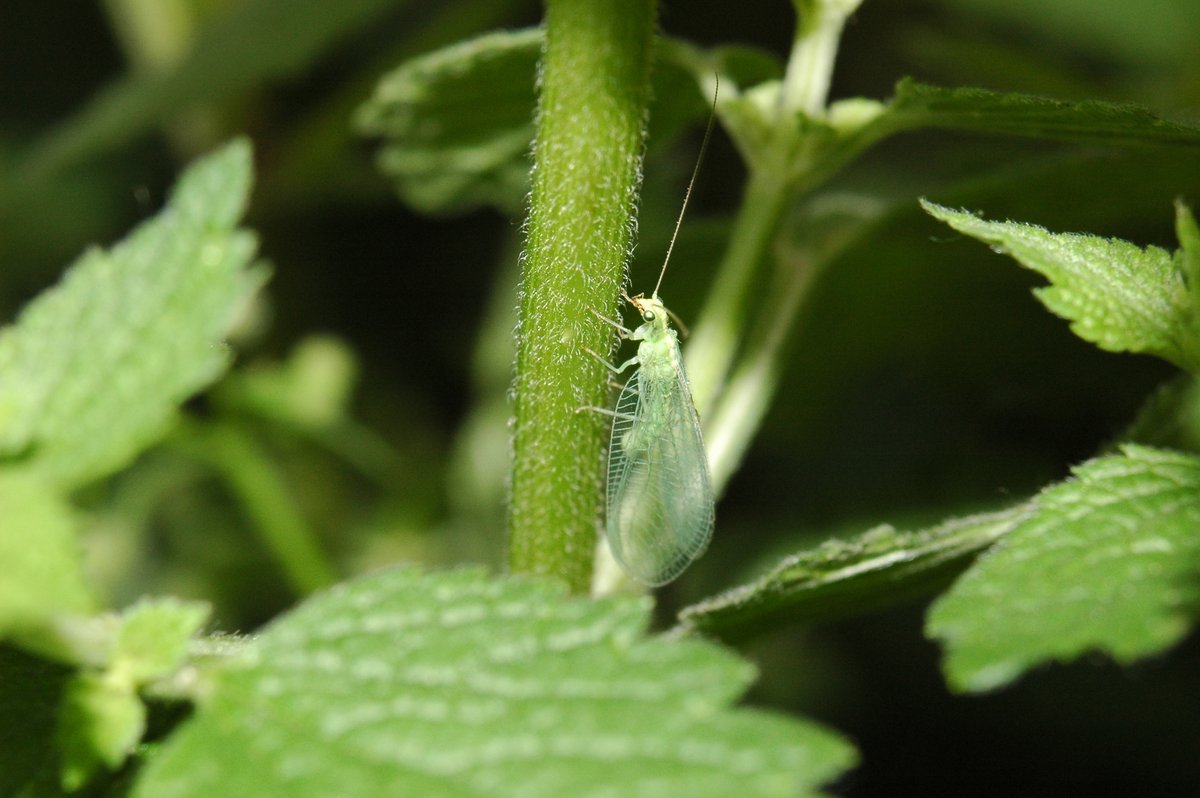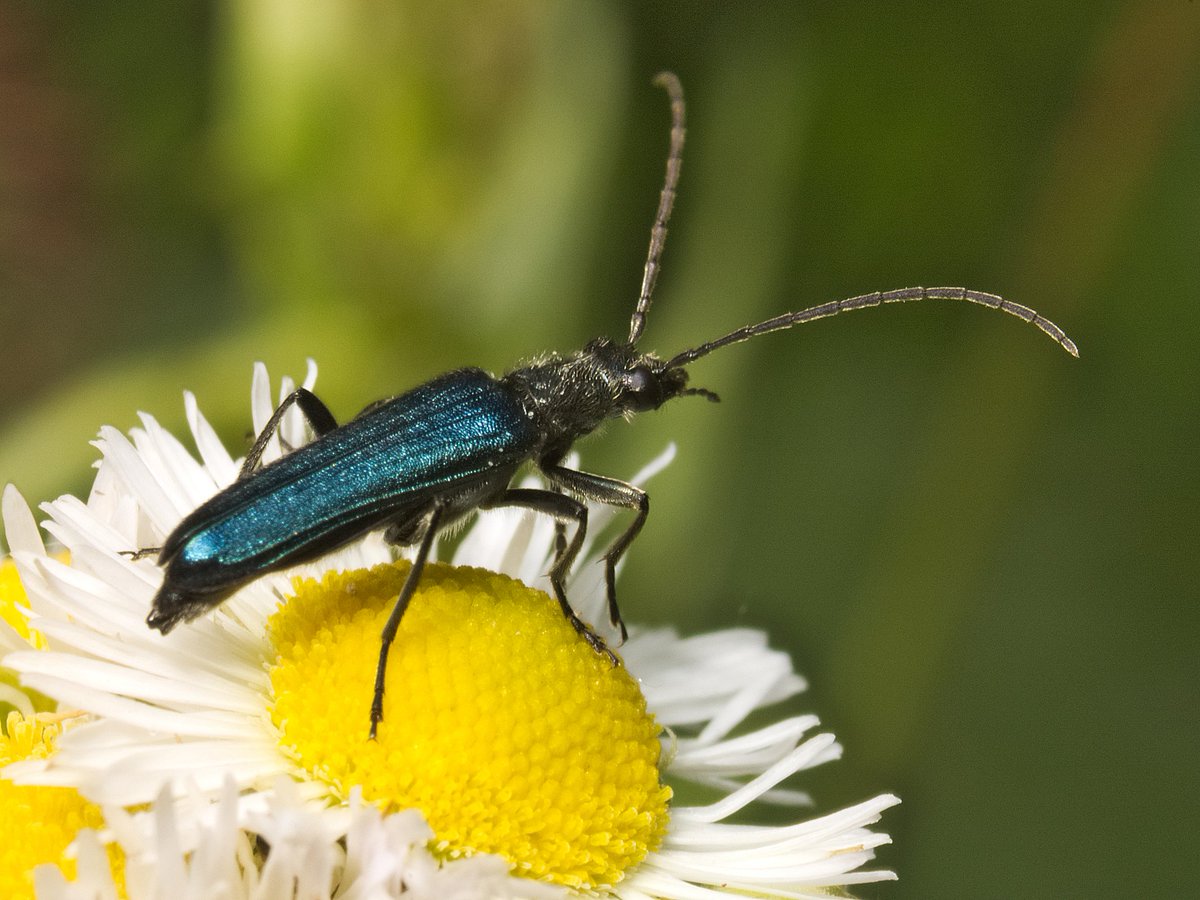It does not take too much to help insects, please see the whole topic below. https://abs.twimg.com/emoji/v2/... draggable="false" alt="👇" title="Down pointing backhand index" aria-label="Emoji: Down pointing backhand index"> @Buzz_dont_tweet @MattEAShardlow @europebutterfly @savebutterflies @BritishMoths @Love_plants @BSBIbotany @Coleopterist @AshWhiffin @botany_beck @RoyEntSoc @NBNTrust @Nature_Spot @Britnatureguide
https://abs.twimg.com/emoji/v2/... draggable="false" alt="👇" title="Down pointing backhand index" aria-label="Emoji: Down pointing backhand index"> @Buzz_dont_tweet @MattEAShardlow @europebutterfly @savebutterflies @BritishMoths @Love_plants @BSBIbotany @Coleopterist @AshWhiffin @botany_beck @RoyEntSoc @NBNTrust @Nature_Spot @Britnatureguide
Two days ago I spotted the fabulous day-flying Horehound Long-horn moth (Nemophora fasciella), female, feeding on Daisy (or annual) fleabane (Erigeron annuus) in the garden. #fleabane #erigeron #plants #daisy #Flowers #GardensHour #micromoth #moths #MothsMatter #macrophotography
This is a threatened moth in Britain and considered a UK BAP priority species. The larva feeds on Black Horehound. Plenty of this beautiful plant in my garden (I gently trimmed paths to allow access to the Horehound patches). #horehound #beneficialplants #NoMowMay
I decided to explore in more detail the larval food plant and found overwhelming diversity of insects that benefit from the Horehound! A friendly reminder that insects and plants are beautifully interconnected and we are responsible for the integrity of this delicate balance.
Signal fly Platystoma sp., looks like P. semionationis (Platystoma means “big mouth”!). I also noticed the Tephritid fly Aciura coryli (not seen in Britain) ovipositing. Larval food plant is the Black Horehound. The adult form feeds on nectar - a beneficial fly! #pollinators
We must not underestimate the role of plants to provide shelter for many insects. Here are more flies. Broad centurian (Chloromyia formosa), the Ensign fly Sepsis fulgens and this Flesh fly, Sarcophaga sp. Last but not least, the Yellow Dung fly. Many #dipterans @flygirlNHM!
@Coleopterist @AshWhiffin, one beautiful bristly beetle caught my attention, Lagria hirta (Darkling beetle). Not surprisingly, Ladybirds and their larvae were there. #beetles #ladybird
Cute small mantis nymph and Green lacewing, a hugely beneficial generalist predator #Mantis #insects #Entomology #nymph #chrysopidae #lacewing #macrophotography
Enough said for the Black horehound! Lets get back to the Daisy fleabane and see what I can find in my archive this #ThrowbackThursday. 26/05/2019, the Horehound Long-horn moth (male) visited again and on 03/06/2018, the wonderful Longhorn #beetle Agapanthia villosoviridescens!
This stunning Chrysidid (Ruby-tailed wasp) visited on 17/06/2013. @DavidNotton
To sum up, Daisy fleabane and Black horehound are truly beneficial plants, please consider keeping and propagating in your garden, they will help many insects!
This is a record from Bulgaria. However, the rarity of this moth is unknown here and I would not be surprised if it is just my garden being home for the beautiful moth - we must counteract habitat loss! Sometimes this is quite simple and does not require much time and effort!

 Read on Twitter
Read on Twitter @Buzz_dont_tweet @MattEAShardlow @europebutterfly @savebutterflies @BritishMoths @Love_plants @BSBIbotany @Coleopterist @AshWhiffin @botany_beck @RoyEntSoc @NBNTrust @Nature_Spot @Britnatureguide" title="It does not take too much to help insects, please see the whole topic below.https://abs.twimg.com/emoji/v2/... draggable="false" alt="👇" title="Down pointing backhand index" aria-label="Emoji: Down pointing backhand index"> @Buzz_dont_tweet @MattEAShardlow @europebutterfly @savebutterflies @BritishMoths @Love_plants @BSBIbotany @Coleopterist @AshWhiffin @botany_beck @RoyEntSoc @NBNTrust @Nature_Spot @Britnatureguide" class="img-responsive" style="max-width:100%;"/>
@Buzz_dont_tweet @MattEAShardlow @europebutterfly @savebutterflies @BritishMoths @Love_plants @BSBIbotany @Coleopterist @AshWhiffin @botany_beck @RoyEntSoc @NBNTrust @Nature_Spot @Britnatureguide" title="It does not take too much to help insects, please see the whole topic below.https://abs.twimg.com/emoji/v2/... draggable="false" alt="👇" title="Down pointing backhand index" aria-label="Emoji: Down pointing backhand index"> @Buzz_dont_tweet @MattEAShardlow @europebutterfly @savebutterflies @BritishMoths @Love_plants @BSBIbotany @Coleopterist @AshWhiffin @botany_beck @RoyEntSoc @NBNTrust @Nature_Spot @Britnatureguide" class="img-responsive" style="max-width:100%;"/>



























